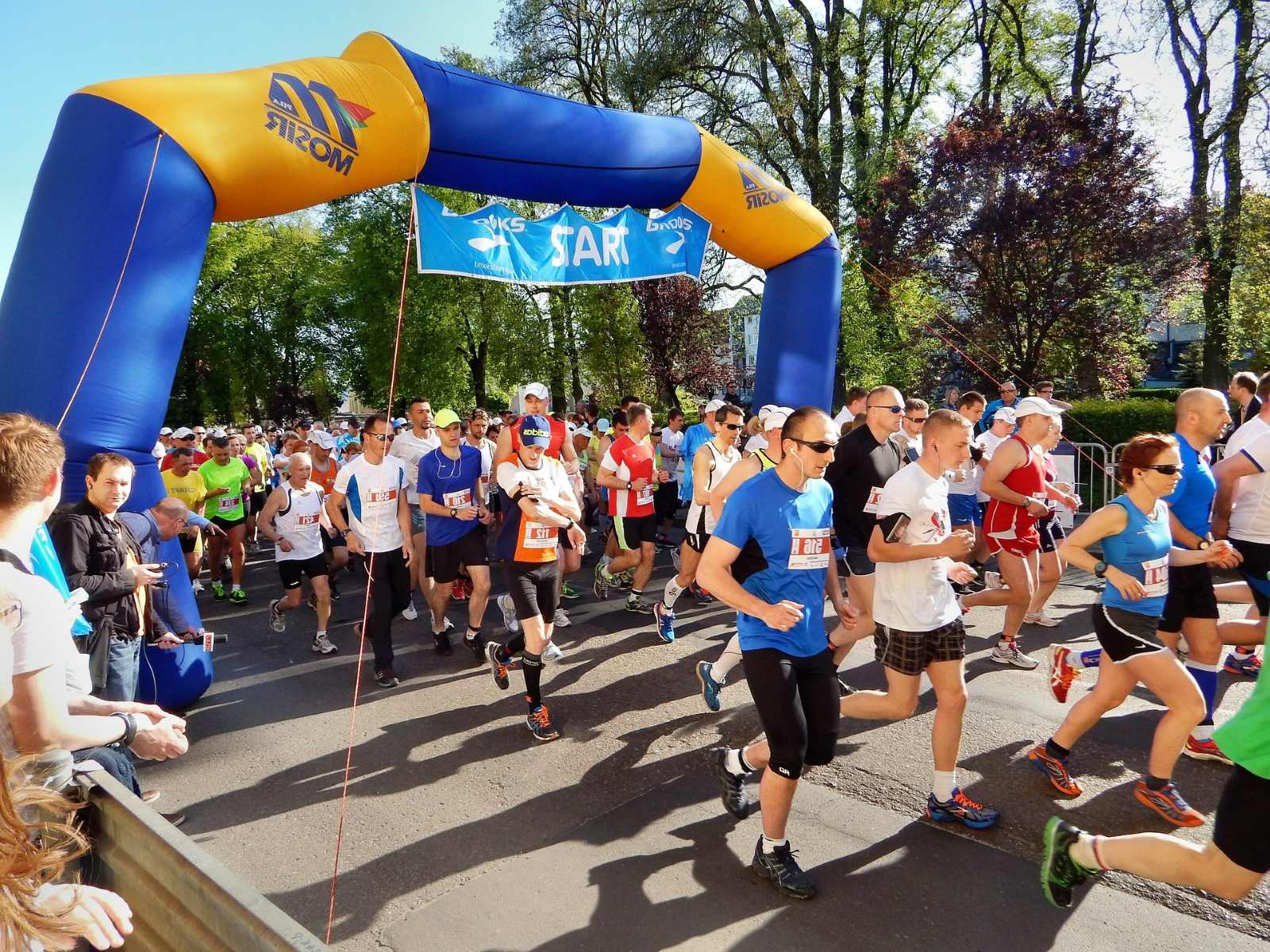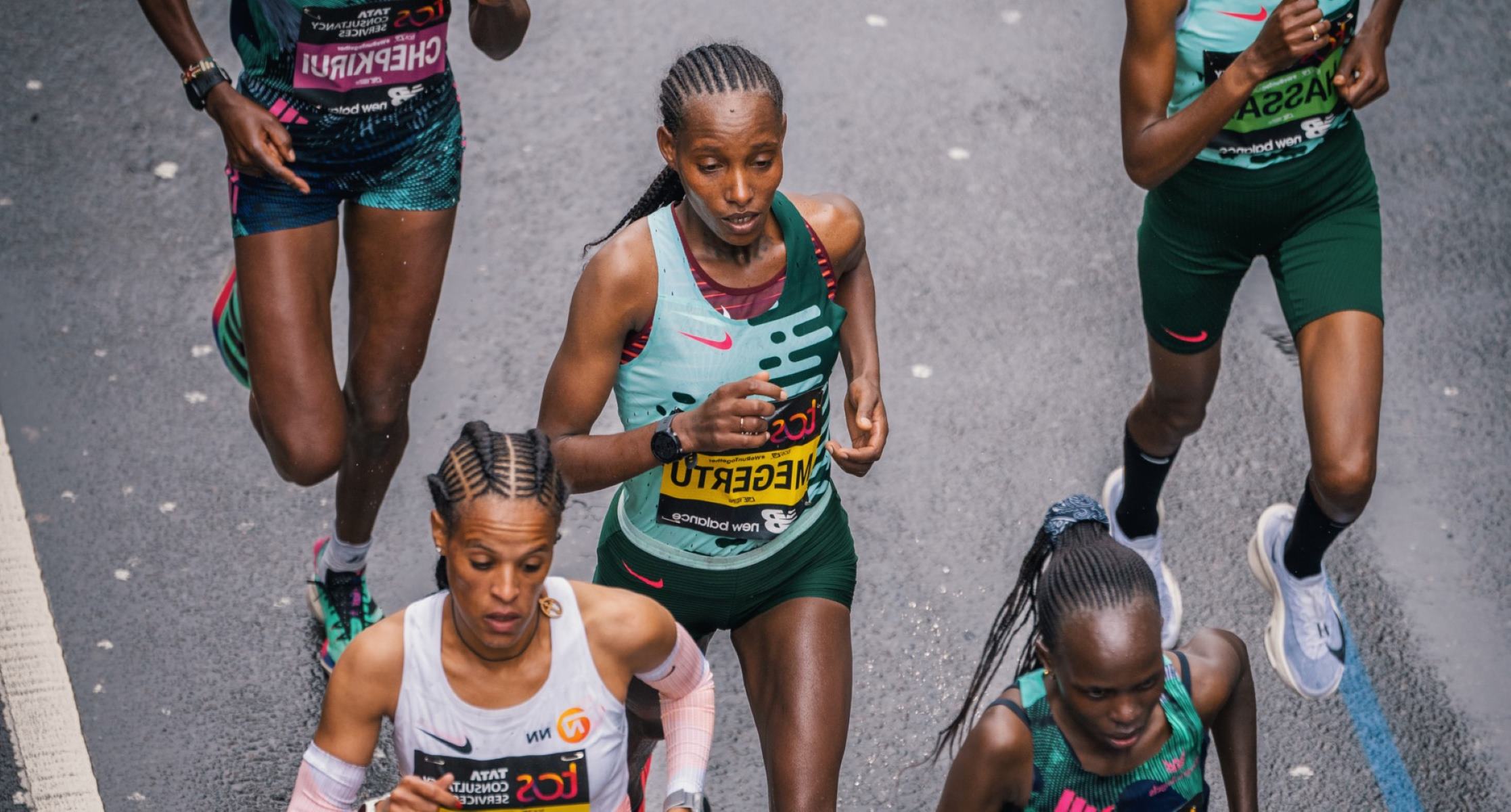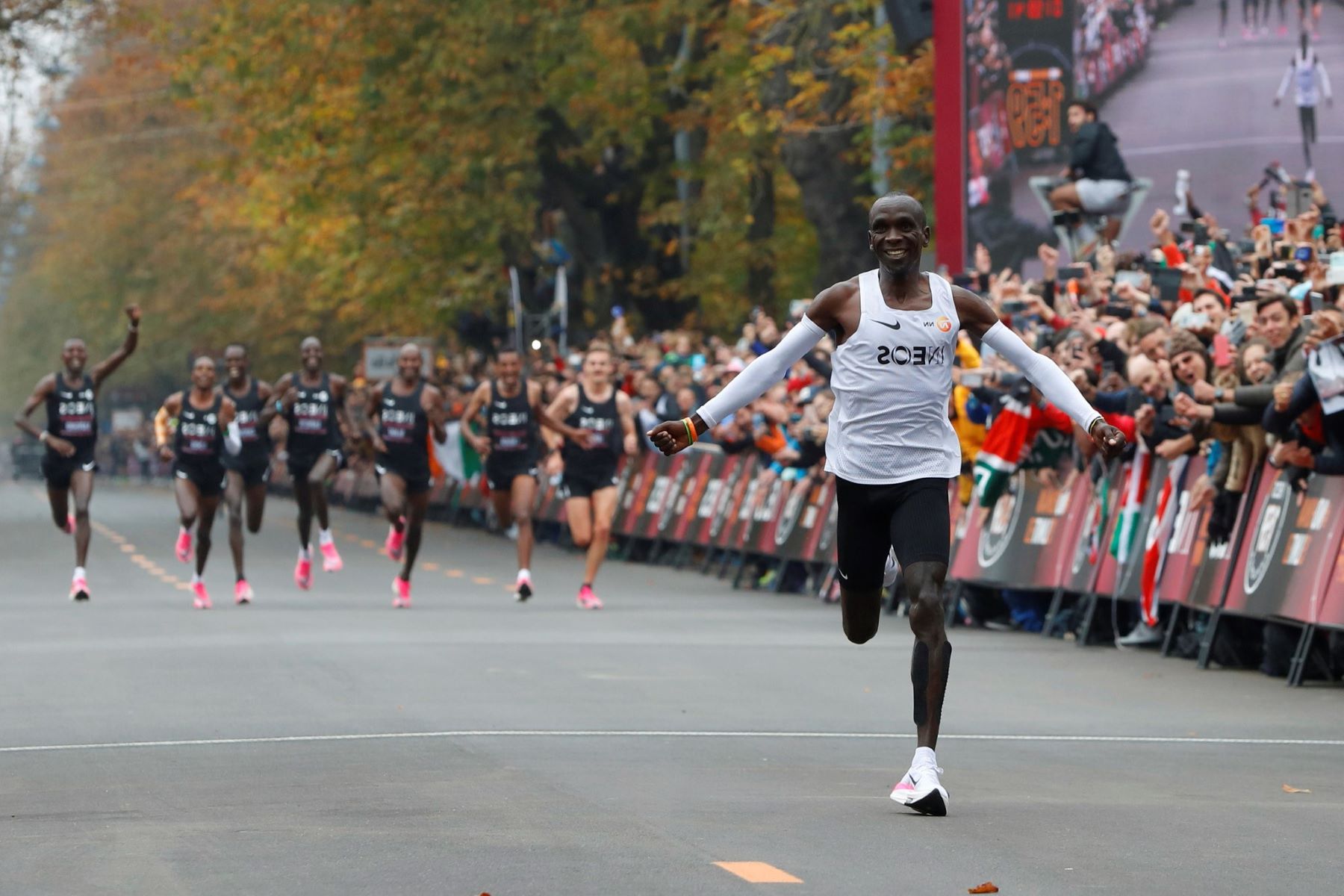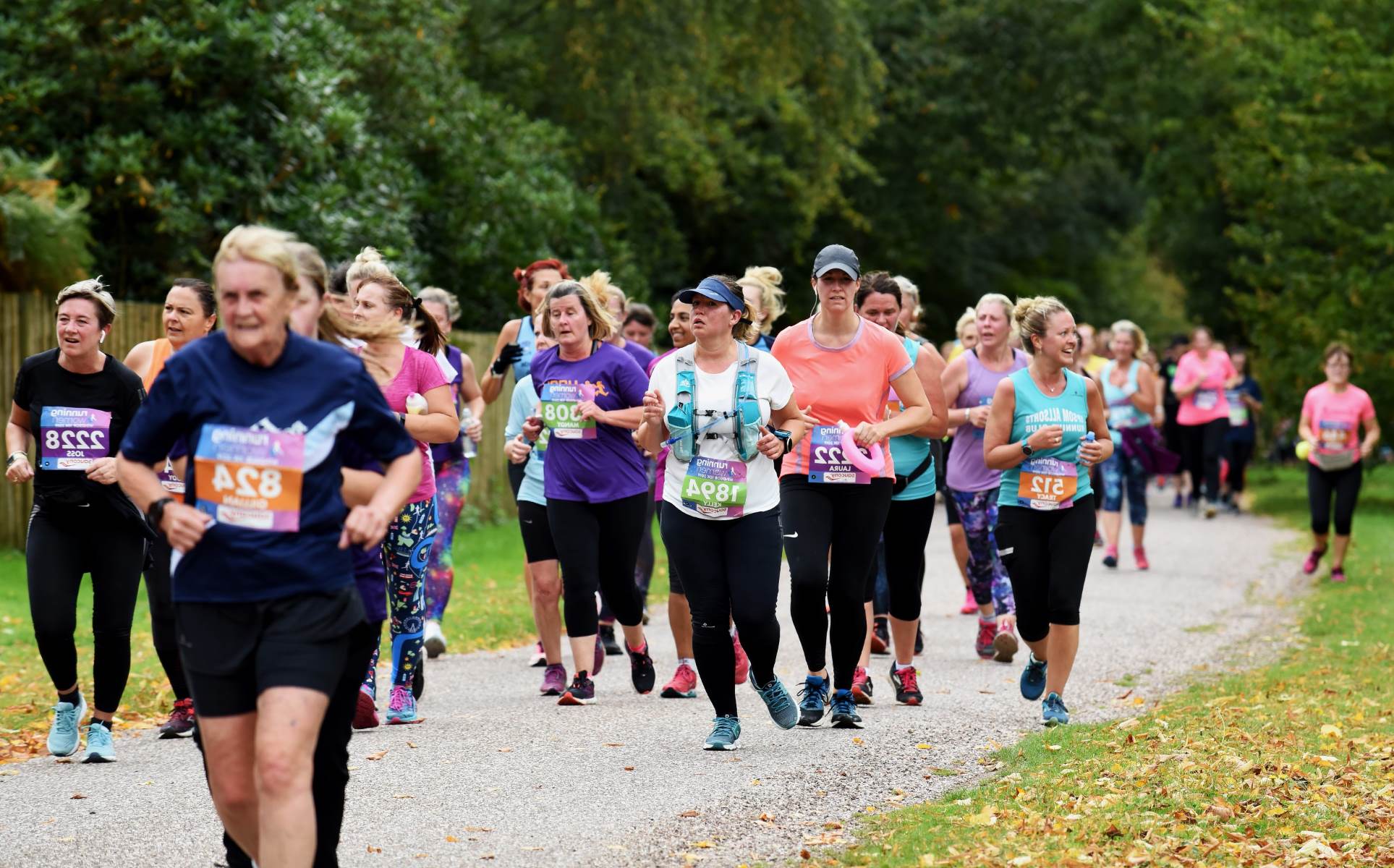Home>Training & Techniques>Paula Radcliffe’s Expert Advice For Marathon Training


Training & Techniques
Paula Radcliffe’s Expert Advice For Marathon Training
Published: March 1, 2024
Get expert marathon training and techniques advice from Paula Radcliffe. Learn how to improve your training and techniques for marathon running.
(Many of the links in this article redirect to a specific reviewed product. Your purchase of these products through affiliate links helps to generate commission for Therunningadvisor.com, at no extra cost. Learn more)
Table of Contents
Understanding the Importance of Proper Nutrition
Proper nutrition is the cornerstone of successful marathon training. It fuels the body, aids in recovery, and optimizes performance. As a marathon runner, your body requires a balanced diet that includes carbohydrates, protein, healthy fats, vitamins, and minerals. Carbohydrates serve as the primary fuel source for endurance activities, making them essential for marathon training. Incorporating complex carbohydrates such as whole grains, fruits, and vegetables into your diet provides sustained energy for long runs and aids in glycogen replenishment.
In addition to carbohydrates, protein plays a crucial role in muscle repair and recovery. Including lean sources of protein such as chicken, fish, beans, and legumes in your meals supports muscle maintenance and growth. Furthermore, healthy fats, found in foods like avocados, nuts, and olive oil, contribute to overall health and help reduce inflammation in the body.
Vitamins and minerals are vital for various bodily functions, including energy production, immune system support, and bone health. Consuming a diverse range of fruits, vegetables, and whole foods ensures that you obtain essential nutrients to support your training and overall well-being.
Hydration is another key aspect of proper nutrition for marathon training. Staying adequately hydrated is essential for maintaining performance and preventing dehydration-related issues during long runs. It is recommended to consume water consistently throughout the day and during training sessions, while also considering electrolyte replenishment for extended workouts.
By prioritizing proper nutrition, you provide your body with the necessary resources to adapt to the physical demands of marathon training. This not only enhances your performance but also supports overall health and well-being, setting the stage for a successful marathon experience.
Incorporating Speed Work into Your Training Plan
Speed work, also known as interval training, is a fundamental component of a well-rounded marathon training plan. While long runs build endurance, speed work focuses on improving running economy, increasing lactate threshold, and enhancing overall race pace. Incorporating speed work into your training regimen not only boosts physical performance but also adds variety and excitement to your workouts.
One of the most effective forms of speed work is interval training, which involves alternating between periods of high-intensity running and active recovery. This method challenges the cardiovascular system, improves running efficiency, and increases the body's ability to tolerate and clear lactate, a byproduct of intense exercise. By regularly engaging in interval training, you can enhance your body's capacity to sustain faster paces for longer durations, ultimately leading to improved race times.
Fartlek, a Swedish term for "speed play," is another valuable speed work technique. It involves unstructured bursts of speed within a continuous run, allowing for flexibility and spontaneity in training. Fartlek sessions can be tailored to mimic race conditions, such as surging to pass competitors or maintaining a strong pace on hilly terrain. This form of speed work not only improves physical performance but also enhances mental toughness and adaptability, crucial elements for success in marathon running.
In addition to interval training and fartlek, tempo runs are essential for developing race-specific fitness. Tempo runs involve sustained efforts at a challenging but manageable pace, typically at or slightly below your lactate threshold. These workouts improve aerobic capacity, increase endurance, and familiarize the body with race pace, ultimately leading to improved performance on marathon day.
When incorporating speed work into your training plan, it is crucial to prioritize proper warm-ups, cool-downs, and adequate recovery. Dynamic warm-up exercises prepare the body for the demands of speed work, reducing the risk of injury and enhancing performance. Similarly, incorporating proper recovery strategies, such as active rest days and post-workout stretching, supports muscle repair and adaptation, ensuring that you derive maximum benefit from your speed work sessions.
By integrating various forms of speed work into your training plan, you can enhance your running performance, build mental resilience, and prepare your body for the demands of marathon racing. Whether you're aiming to achieve a personal best or simply enhance your overall running experience, speed work is a valuable tool for every marathon runner's training arsenal.
The Role of Rest and Recovery in Marathon Training
Rest and recovery are integral components of a successful marathon training regimen. While the focus is often on the physical exertion and endurance required for long-distance running, the significance of adequate rest and recovery should not be underestimated. In fact, it is during periods of rest that the body undergoes crucial adaptations, allowing for improved performance and injury prevention.
One of the primary purposes of rest in marathon training is to facilitate muscle repair and growth. Endurance running places significant stress on the muscles, leading to microscopic damage and fatigue. It is during rest periods that the body initiates the repair process, rebuilding and strengthening the muscles to withstand future training loads. Without sufficient rest, the risk of overuse injuries and performance plateaus significantly increases.
Moreover, rest plays a vital role in preventing mental and physical burnout. Marathon training can be mentally and physically demanding, often requiring runners to push their limits during long runs and intense workouts. Scheduled rest days provide an opportunity to recharge both the body and mind, reducing the likelihood of fatigue and staleness. This, in turn, allows runners to approach subsequent training sessions with renewed energy and enthusiasm.
Recovery, on the other hand, encompasses a range of strategies aimed at promoting healing and adaptation within the body. This includes activities such as foam rolling, stretching, and low-impact cross-training, all of which aid in muscle recovery and flexibility. Additionally, proper nutrition and hydration during the recovery phase are essential for replenishing glycogen stores, repairing muscle tissue, and supporting overall recovery.
Adequate sleep is another crucial aspect of rest and recovery in marathon training. During sleep, the body undergoes essential physiological processes, including hormone regulation, muscle repair, and cognitive consolidation. Prioritizing quality sleep not only enhances physical recovery but also contributes to improved mental acuity and overall well-being.
Incorporating rest and recovery into a marathon training plan requires a balanced approach. While it is important to challenge the body with progressive training stimuli, it is equally essential to allow for adequate rest periods and recovery strategies. By doing so, runners can optimize their training adaptations, reduce the risk of injury, and maintain long-term consistency in their pursuit of marathon success.
In essence, rest and recovery are not merely periods of inactivity; they are vital components of the training process that enable runners to adapt, grow stronger, and ultimately perform at their best on race day. By recognizing and embracing the role of rest and recovery in marathon training, runners can cultivate a sustainable and effective approach to achieving their long-distance running goals.
Building Mental Toughness for Race Day
Building mental toughness is a critical aspect of preparing for the challenges of race day. While physical training is essential for marathon success, the ability to overcome mental hurdles and push through discomfort can make a significant difference in performance. Developing mental resilience involves honing the mind-body connection, cultivating positive thought patterns, and implementing strategies to navigate the inevitable highs and lows of a marathon.
Visualization is a powerful tool for building mental toughness. By vividly imagining successful race scenarios, runners can familiarize themselves with the demands of the marathon and mentally rehearse strategies for overcoming obstacles. Visualizing crossing the finish line with strength and determination can instill a sense of confidence and preparedness, helping to alleviate pre-race jitters and bolstering mental fortitude.
Positive self-talk is another key component of mental toughness. Internal dialogue can significantly impact performance, making it crucial to cultivate a mindset of self-encouragement and resilience. Affirming statements such as "I am strong," "I can overcome challenges," and "I am prepared for this race" can bolster confidence and fortify mental resolve, enabling runners to confront adversity with determination and optimism.
Embracing discomfort and uncertainty is essential for building mental toughness. Long-distance running inevitably involves moments of physical and mental strain, and learning to embrace these discomforts as part of the journey is crucial for race day success. By reframing discomfort as a natural and conquerable aspect of the marathon experience, runners can develop the mental resilience needed to push through challenging moments and maintain focus on their goals.
Practicing mindfulness and staying present during the race is instrumental in building mental toughness. Focusing on the current mile, the rhythm of breathing, and the surrounding environment can help runners stay grounded and resilient, preventing the mind from becoming overwhelmed by the magnitude of the race. By breaking the marathon into manageable segments and staying attuned to the present moment, runners can navigate the mental challenges of race day with greater composure and determination.
In essence, building mental toughness for race day involves a combination of mental rehearsal, positive self-talk, embracing discomfort, and staying present. By cultivating these mental attributes during training and incorporating them into race day strategies, runners can fortify their resolve, overcome obstacles, and ultimately achieve their marathon goals.
Avoiding Common Training Mistakes
Avoiding common training mistakes is essential for maximizing the effectiveness of marathon preparation and minimizing the risk of setbacks. By recognizing and addressing these pitfalls, runners can optimize their training experience and enhance their overall performance on race day.
One common mistake is neglecting the gradual progression of training intensity and volume. Overzealous training, such as rapidly increasing mileage or intensity, can lead to overuse injuries and burnout. It is crucial to adhere to a structured training plan that incorporates progressive overload while allowing for adequate recovery. This approach promotes sustainable growth and reduces the likelihood of training-related injuries.
Another prevalent error is disregarding the importance of cross-training and strength training. While running is the focal point of marathon training, incorporating cross-training activities such as cycling, swimming, or yoga can provide valuable physical and mental benefits. These activities help prevent overuse injuries, improve overall fitness, and offer a refreshing break from running. Additionally, neglecting strength training can lead to muscular imbalances and decreased running efficiency. Including strength exercises that target key muscle groups, such as the core, glutes, and hips, can enhance running performance and reduce the risk of injury.
Improper pacing during training runs is also a common mistake that can hinder progress. Many runners fall into the trap of consistently running at the same moderate pace, failing to incorporate varied intensities into their workouts. Implementing a mix of easy runs, tempo runs, long runs, and speed work allows for a well-rounded training stimulus, promoting physiological adaptations and improving overall race readiness.
Inadequate recovery and rest can significantly impede training progress and increase the risk of injury. Failing to prioritize rest days, proper sleep, and recovery strategies can lead to fatigue, decreased performance, and heightened susceptibility to overtraining. It is essential to listen to the body's signals, incorporate rest days into the training schedule, and embrace recovery practices such as foam rolling, stretching, and adequate hydration.
Lastly, overlooking the significance of proper nutrition and hydration can undermine training efforts. Inadequate fueling before, during, and after runs can compromise performance and impede recovery. It is essential to maintain a well-balanced diet that supports the energy demands of marathon training and prioritizes hydration to sustain optimal performance and aid in recovery.
By recognizing and actively avoiding these common training mistakes, runners can cultivate a more effective and sustainable approach to marathon preparation. Embracing a balanced and mindful training regimen that addresses these pitfalls can lead to improved performance, reduced injury risk, and a more fulfilling marathon experience.
Read more: Expert Advice On Splayed Feet And Running
Setting Realistic Goals for Your Marathon
Setting realistic and achievable goals is a pivotal aspect of successful marathon preparation. Whether you are a seasoned runner or embarking on your first marathon journey, establishing clear and attainable objectives can provide direction, motivation, and a framework for your training and race day strategy.
When setting marathon goals, it is essential to consider various factors, including your current fitness level, past running experience, and the specific characteristics of the race you are targeting. Realistic goals should align with your training background and take into account any potential limitations or challenges you may encounter during the preparation process.
One approach to goal setting is to establish multiple tiers of objectives, encompassing a range of outcomes that reflect different levels of achievement. This may include setting a primary goal, such as achieving a specific finishing time, alongside secondary goals that account for variations in race conditions, unforeseen challenges, or personal performance factors. By delineating a spectrum of objectives, you can maintain flexibility and adaptability while still striving for significant accomplishments.
Furthermore, setting process-oriented goals can be instrumental in fostering continuous improvement and enhancing the overall marathon experience. Process-oriented goals focus on aspects within your control, such as consistent training adherence, nutrition optimization, and mental resilience development. By prioritizing these elements, you can cultivate a sense of progress and achievement throughout the training cycle, irrespective of specific race day outcomes.
It is important to approach goal setting with a balanced perspective, considering both the aspirational and the pragmatic aspects of marathon running. While aiming for ambitious targets can be motivating, it is equally crucial to acknowledge the inherent unpredictability of long-distance racing and the potential for unforeseen variables to impact performance. Embracing a realistic and adaptable mindset allows for a more resilient and fulfilling marathon journey.
Ultimately, setting realistic goals for your marathon involves a blend of ambition, self-awareness, and adaptability. By crafting objectives that reflect your capabilities, align with your training approach, and encompass a range of potential outcomes, you can navigate the marathon preparation process with purpose and determination, setting the stage for a rewarding and successful race day experience.















